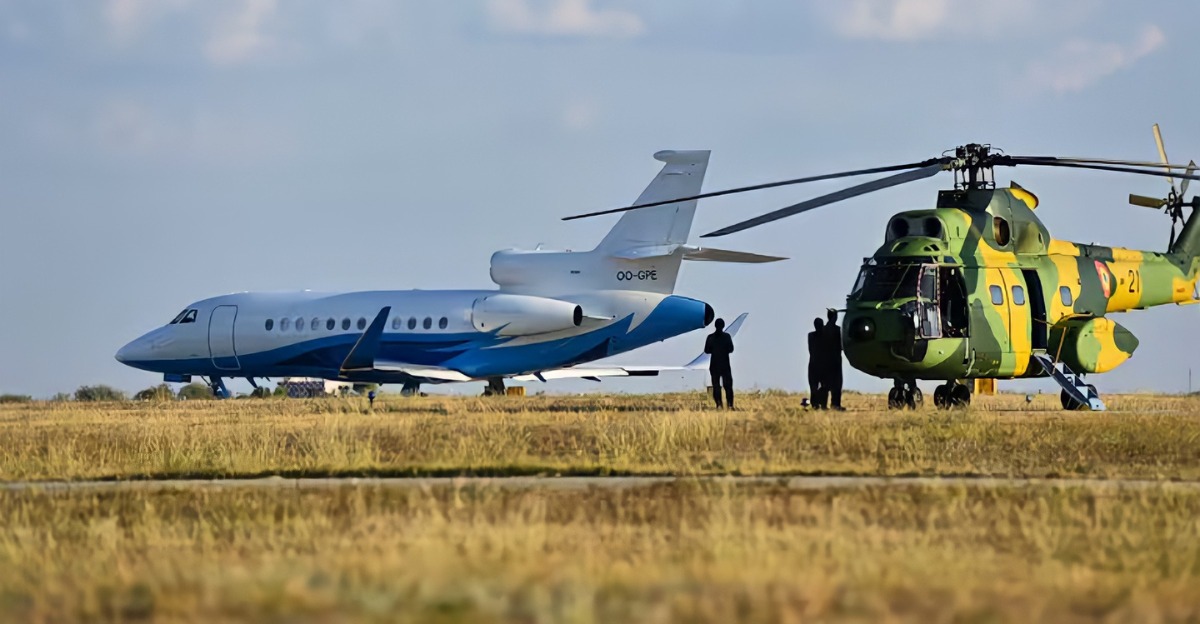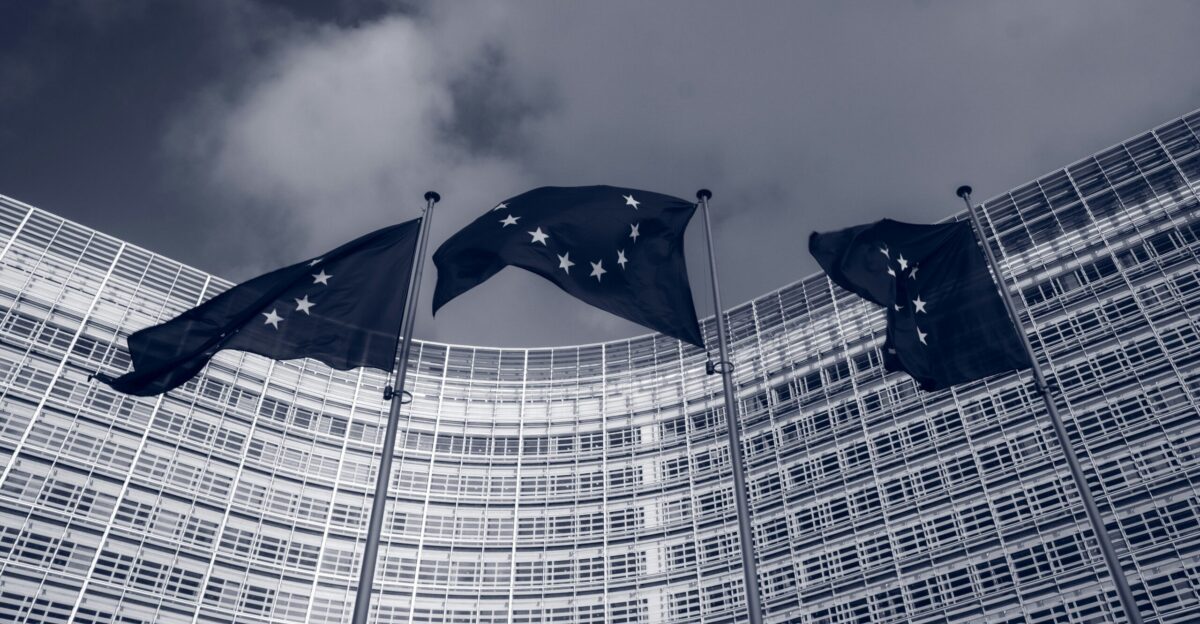
Eastern Europe has seen a sudden explosion of GPS jamming incidents. In Poland, authorities logged 2,732 such cases in January 2025 – far above the 1,908 recorded in October 2023.
Lithuania reported a similar surge, with pilots documenting over 1,000 disruptions in June 2025 alone, compared to just 46 in the same month last year.
These numbers mark an unprecedented escalation. Aviation agencies warn that what was once a niche is now routine: skies over the Baltic and Eastern Europe are repeatedly blinded by electronic interference.
A Lithuanian official called the trend “worrying,” urging the EU to recognize that “these interferences will not go away”.
Escalation Pattern

Experts trace this rise to 2022 and beyond. Industry data show thousands of flights suffering GPS outages in 2024 – roughly triple the level of 2021.
The sharpest spikes have occurred in the Baltic Sea, Eastern European, and Black Sea corridors.
Pilots flying in the region have reported sudden loss of navigation signals almost daily. IATA noted that GNSS “interference” incidents jumped by about 175% from 2023 to 2024, with spoofing up 500%.
Colliding aircraft and deadly accidents are a real concern. “Interference with GPS increases the risks of accidents,” explains Capt. Joe Burns of the Global Positioning Advisory Board, “and almost always makes flights longer and more expensive”.
Historical Context

Russia’s use of GPS jamming traces back to Crimea in 2014, but it remained low-key until the full-scale war in Ukraine. In fact, hybrid warfare experts report a tripling of Russian-linked covert operations from 2023 to 2024.
Electronic warfare – including jamming devices – now accounts for around 15% of Russia’s documented attacks on the West.
GPS interference has become a deliberate tool in Moscow’s playbook. Intelligence analysts say Russia deploys such below-threshold tactics to disrupt NATO without triggering an outright war.
As one briefing noted, “these active measures are not considered armed attacks,” meaning Moscow can conduct them with impunity. The trend reflects a strategic shift: rather than sending tanks, Russia quietly sows chaos in civilian skies.
Geographic Epicenter

Kaliningrad Oblast – the Russian Baltic exclave – is now seen as the primary jamming hub. Military research shows interference patterns radiating 60–120 miles out from this territory.
The scale is massive: pilots report that entire swathes of airspace suddenly go blind to GPS. “We are experiencing interference over a 60–120 mile area,” said one Baltic pilot, noting the signs of “heavy organization behind the operation”.
Kaliningrad and nearby St. Petersburg hosts special electronic warfare units.
Their proximity to Poland, Lithuania, and the Suwałki Gap means one jammer can disrupt multiple NATO countries simultaneously. Satellite imagery and flight data show simultaneous blackouts as far away as Romania and Sweden during exercises in Kaliningrad.
The Plovdiv Incident

Here’s where it gets personal: on 1 September 2025, President von der Leyen’s plane lost GPS mid-flight. Moments before landing at Bulgaria’s Plovdiv Airport, the cockpit alarms blared “GPS signal lost.”
With no GPS, the crew resorted to paper charts and radio beacons, circling for an hour on ground-based navigation.
EU officials immediately blamed Russia. “We can indeed confirm that there was GPS jamming,” said Commission spokesperson Arianna Podestà.
Bulgarian authorities had already warned pilots to switch to “terrestrial navigation tools” for safety. Podestà added that the Bulgarians “suspect this was due to blatant interference by Russia”.
Regional Fallout

The Plovdiv scare is not isolated. In April 2024, for example, Finnair halted flights to Tartu, Estonia after GPS approaches repeatedly failed.
Similarly, Poland, Romania and Lithuania have each reported multiple flights suddenly losing satellite navigation. Pilots describe landing on “legacy” systems like ILS or VOR — methods honed decades ago but rarely used today.
Air traffic controllers across the region have implemented new protocols for “GPS-denied” approaches. Even NATO’s monitoring is on alert: the Alliance notes that “the entire GPS zone of the airport” can vanish unexpectedly.
A senior EU aviation source warned that this was no coincidence. In fact, one European Commission spokesman said Europe is now “the most affected region globally” by such interference.
Human Impact

“We’re in uncharted territory,” one pilot confided after an incident over Estonia. The technical jargon hides a frightening reality: pilots sometimes get “Terrain ahead! Pull up!” warnings triggered by bogus GPS data.
Passengers on these flights experience sudden diversions and delays with no clear explanation. EU insiders say thousands of flyers this year have faced hours of circling or emergency landings because the GPS simply stopped working.
The stress cascades down: airport staff scramble for backups, travellers miss connections, and families worry. Even President von der Leyen, shortly after the Plovdiv incident, condemned Russia as “a predator” and vowed deterrence.
For ordinary Europeans, the threat has become real. As one passenger told local media after a diversion, “It felt like we were flying blind – and that’s terrifying.”
Industry Response

The aviation industry is scrambling for fixes. Finland, for instance, has installed ground radar landing systems at 14 airports to allow safe landings without GPS.
Airlines are testing advanced inertial navigation units and updating cockpit software to handle jams.
Aircraft makers and tech firms are accelerating anti-jamming tools: better GPS antennas, cryptographic signals, and “dual-band” satellite systems. Regulators like EASA and IATA have launched contingency plans.
The European Investment Bank is offering loans for defense and security projects, and venture funds are eyeing resilient nav startups. As EASA’s Jesper Rasmussen emphasizes: “We must build resilience” into aviation. The goal is clear: ensure flights can rely on something even if GPS suddenly quits.
Strategic Implications

In strategic terms, GPS jamming is a new battlefield. It blurs civilian and military lines: an attack on civilian flights can serve as a warning to NATO without firing a shot.
Crucially, it falls below NATO’s Article 5 threshold. As one analysis notes, NATO doesn’t treat such electronic measures as an “armed attack,” so no automatic collective response is triggered.
Russia thus achieves maximum disruption with minimum risk. It’s cheap, deniable, and instantly impactful on public confidence. A veteran GPS expert warns that these attacks are psychological as much as physical.
“When GPS is out, accidents and delays skyrocket,” says Capt. Joe Burns. By targeting civilian flights, Russia sends a message of vulnerability – testing NATO’s resolve while hoping Western leaders won’t retaliate militarily.
Pattern Recognition

This is not a one-off. In March 2024, UK Defence Secretary Grant Shapps’s RAF flight was jammed for 30 minutes near Kaliningrad.
Phones went dead, and pilots again fell back on old navigation. Officially, London downplayed it as “not unusual” – but the pattern was clear.
High-profile flights are being chosen deliberately. Analysts say the Russians have learned exactly which planes carry VIPs and send tailored signals.
Each new incident, like von der Leyen’s, builds confidence that this method works. The sophistication suggests coordination: some jammers spoof position, others simply drown out the satellites, but all share one goal – shake leadership and signal power without a single bullet.
Internal Tensions

Within Europe, frustration is rising. Pilots’ unions are demanding immediate international action and legal protection. Some airlines argue that current treaties lack the muscle to punish state-backed jamming.
Even as Europe pours money into tech, legal remedies lag. Regulators point out that jamming is already banned by the International Civil Aviation Organization (ICAO), which records thousands of harmful interference cases yearly.
But enforcement is weak: attributing a silent electronic pulse to a country in real time is nearly impossible.
Meanwhile, regulators are updating rules; for example, EASA now requires airports to maintain traditional landing aids and pilots to train for GPS outages. Still, many in the industry feel exposed.
Command Changes

Politically, Europe is reorganizing. EU institutions now include a dedicated Commissioner for Defence and Space – a post established in 2024 to mainstream security concerns.
Meanwhile, NATO has created new centers and task forces specifically to study and counter hybrid threats like GPS jamming.
Member states have set up joint innovation hubs for anti-jam technology and shared intelligence cells tracking suspicious signals. Even the EU’s Space Programme is being retooled: more investments are moving toward secure alternative navigation satellites.
Europe’s defense bureaucracy is bending to the new reality: old, modular structures are giving way to integrated commands focused on 21st-century warfare domains.
Recovery Strategy

Europe’s recovery plans now foreground security. The EU’s “Readiness 2030” initiative aims to channel €800 billion into defense and related investments by 2030.
As part of this, 15–16 countries have activated the Stability Pact escape clause, allowing them to spend up to 1.5% of GDP extra on defense. A newly passed tool, the Security Action for Europe (SAFE), can issue €150 billion in loans for cross-border military projects.
The incoming EU budget (2028–34) earmarks €131 billion for defense and space.
National air forces are retooling: NATO reported that many eastern members are buying new aircraft and jam-resistant missiles. The idea is to absorb massive funding quickly, plugging capability gaps. Plans are under way for joint procurement of GPS backup systems, training programs in GNSS denial, and multi-country exercises in no-GPS scenarios.
Expert Skepticism

Still, some experts caution that dollars alone may not suffice. “Money buys tanks, but these threats need innovation,” warns EASA’s Jesper Rasmussen.
Analysts argue that electronic warfare is constantly evolving, demanding new technologies and strategies, not just bigger budgets. Industry insiders note that past calls for resilience – redundant nav systems, cross-checks, and new procedures – were often delayed by cost concerns.
With spending now surging, the question is whether bureaucracies can procure novel tech quickly enough. Some fear that fragmented programs will repeat past mistakes.
As one former NATO planner put it, “We can fund defense islands, but jammed signals leak through every crack unless we change the architecture.”
Looking Forward

The core question is looming: can Europe innovate its way out of this trap, or must aviation fundamentally change? Von der Leyen’s tour continues into the Baltic and Black Sea neighbors, where every day the G7 leads face “pull up” warnings in cockpits.
EU insiders say she will carry these lessons back to Brussels. The Plovdiv jamming “underlines the urgency” of bolstering NATO’s eastern defense.
Will Europe keep trying to shield the old system with patches, or begin planning for routine GPS outages? Some proposals include mandatory backup nav for all future aircraft and even civilian flights being routed through “clean corridors.”
One thing is clear: this incident has shattered illusions. The era when satellites could be taken for granted is over, and leaders must now decide how to adapt.
Political Ramifications

Politicians are seizing on the GPS crisis. In EU capitals, von der Leyen’s GPS brush with danger is cited as evidence that integration must deepen. “We will invest in defense spending… even more after this incident,” Podestà affirmed, echoing widespread calls for tighter unity.
Debates once theoretical – like creating an EU military command or expanding NATO’s Article 5 definition – have new momentum.
In NATO forums, officials are discussing whether an electronic attack could count as aggression under Article 5’s mutual defense pledge.
Domestically, the jamming episode strengthens hardliners: defense hawks argue GPS jamming is a cyber-terror act, not a technical glitch. Across Europe, public opinion is shifting. Many now view Russian hybrid warfare as a real, even “sea-of-skies” threat, bolstering support for the largest peacetime military build-up in decades.
International Consequences

On the global stage, the incident exposes gaps in aviation law. International agreements (ICAO conventions, ITU rules) technically ban malicious jamming, but they weren’t designed for state-level sabotage.
Proving a country did it is hard – radio signals leave no fingerprints. Aviation regulators and states are pushing ICAO and the UN to draft new protocols for electronic attacks.
Meanwhile, NATO allies have begun drafting a joint protocol: should an unclaimed jamming hit one nation, others might respond collectively with sanctions or interdiction. Diplomatic channels are also creaking: classic talks mean little when one side sends invisible radio waves.
Some diplomats admit this is uncharted territory. Unlike a missile strike, GPS jamming leaves no wreckage, so the usual tools of sovereignty enforcement (protests, sanctions) are blunt.
Legal Complexities

Courts and lawyers now face an unprecedented question: What is GPS jamming, legally? Is it an act of war, an act of terrorism, or a novel form of piracy? Europe has already moved to punish Russia indirectly.
In July 2025, the EU blacklisted a Kaliningrad-based company and two officials linked to the jamming incident.
But attributing interference to a specific entity is a heavy lift. Proving in court that a Russian military unit was behind the loss of navigation systems will rely on intelligence secrecy more than open evidence. Even who to charge – a state actor, a citizen, or a proxy – is unsettled.
Whatever rulings emerge will set precedents for electronic warfare law. For now, many governments treat jamming under counter-terrorism or defense statutes. But legal scholars warn: today’s emergency measures could harden into tomorrow’s strict war doctrines.
Societal Shifts

Life is changing for the average traveler. Reservations and boarding passes now come with fine print about “potential for GPS disruptions.” People raised on instant navigation apps are slowly learning: yes, flights can be rerouted by an invisible jammer.
This means longer flight times and unexpected layovers becoming routine rather than rare. Airlines have begun training cabin crews to explain GPS issues to nervous passengers (“folks, the pilots are navigating manually”).
In Eastern Europe, children in school civics discussions have been asking if airplanes can even “get lost.” Public trust in seamless travel has eroded. Some airlines are offering app updates that automatically switch pilots to backup radio ranges.
Even road traffic is indirectly affected: transport planners fear that once satellites are unreliable, coordinated land-and-air logistics will need manual oversight.
Future Framework

The GPS jamming incidents mark a watershed: what was once hypothetical is now real. European leadership has had a wake-up call. Moving forward, responses must span beyond jets and ships. It will require new international cooperation – NATO, the EU, and partners like the US and Japan all need frameworks for joint electronic defense.
Technology must advance: resilient navigation (e.g. quantum sensors, fiber-optic gyros) and satellite systems that auto-detect attacks will be key.
But cultural change is also vital: pilots and air-traffic teams must now be as proficient with “old-school” navigation as with GPS. EU and NATO bureaucracies will need to share intelligence on jamming in real time.
The question is no longer whether GPS interference will recur, but how quickly Europe can retool its institutions, its economy, and its mindset to live with this new form of conflict.